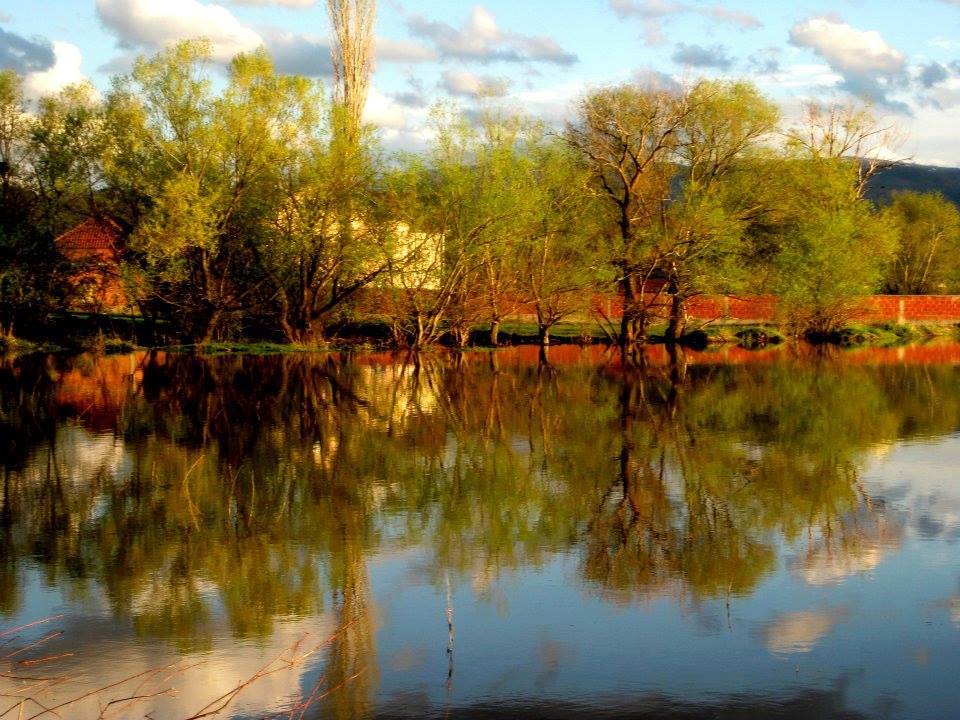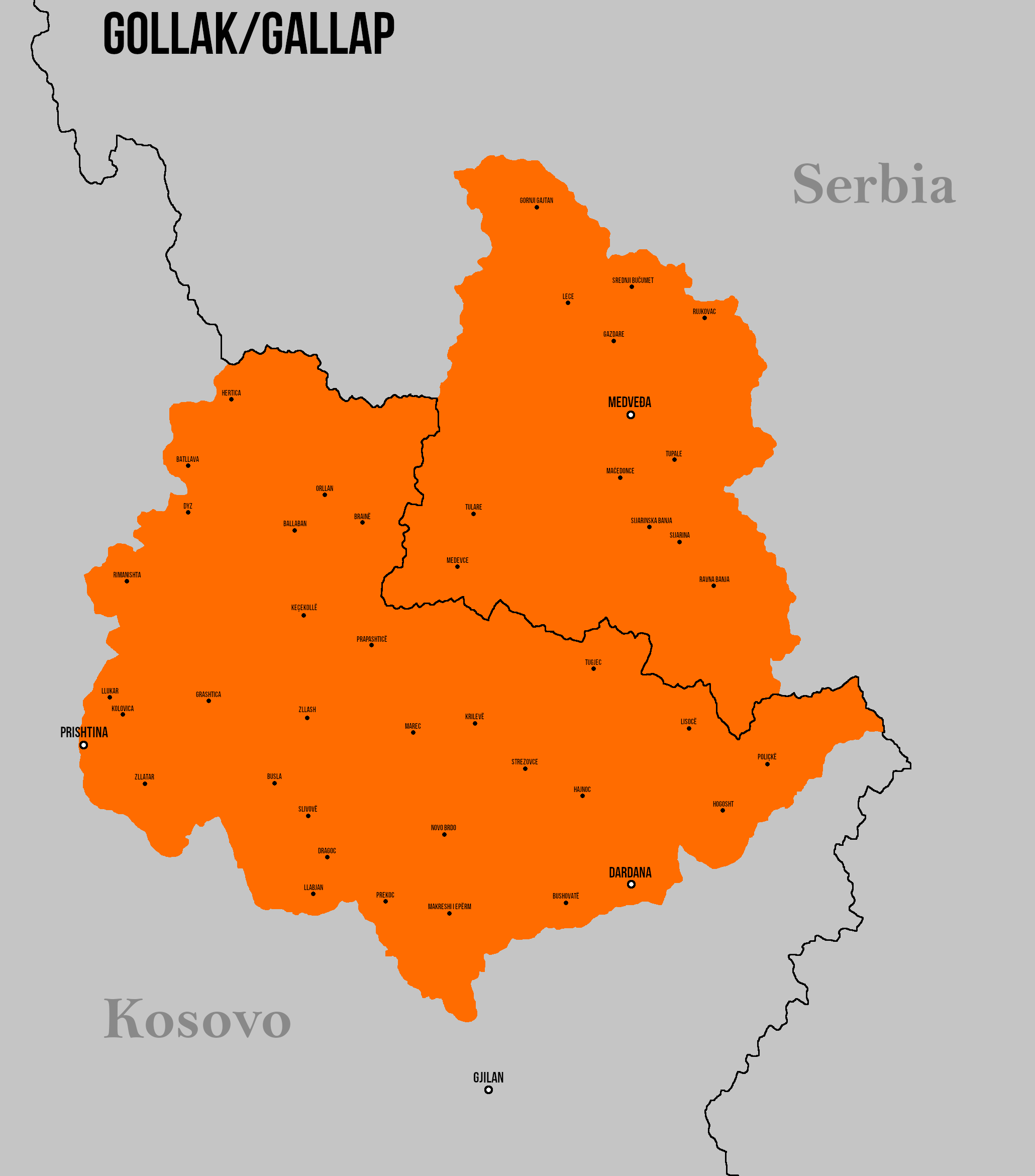|
Anamorava
Anamorava ( sq, Anamoravë) or Kosovo Pomoravlje ( sr, Косовско Поморавље / ''Kosovsko Pomoravlje'', " Pomoravlje of Kosovo"), is a valley in the Republic of Kosovo, in the southern part of the District of Gjilan surrounding the Morava e Binçës River. It stretches eastward to the Preševo Valley in southern Serbia. The mountains in this region, rising to an altitude of , border the Karadak region in north of Skopje. Gjilan, Kamenica, Novobërdë and Viti are municipalities located in the region. The region gave its name to Kosovo-Pomoravlje District, which largely corresponds to its successor District of Gjilan in the Republic of Kosovo. It is known for recording the lowest temperature in Kosovo: , on 25 January 1963. Name The region is known as ''Kosovsko Pomoravlje'' (, "Morava Valley of Kosovo") in Serbian and as ' ("Valley of Binač Morava") in Albanian. Its name is derived from the Binačka Morava (Morava e Binçës) River, which flows through norther ... [...More Info...] [...Related Items...] OR: [Wikipedia] [Google] [Baidu] |
District Of Gjilan
The District of Gjilan ( sq, Rajoni i Gjilanit) is one of the seven districts (the higher-level administrative divisions) of Kosovo. Its seat is in the city of Gjilan. History Anamorava, literally "side of river of Morava", is the hilly countryside in south eastern Kosovo south of Gjilan and on the Binačka Morava. It stretches eastward to the Preševo (Presheva) valley in southern Serbia. The mountains in this region rise to an altitude of 1,000 to 1,200 meters, and culminate in the Karadak region bordering neighboring North Macedonia north of Skopje Skopje ( , , ; mk, Скопје ; sq, Shkup) is the capital and largest city of North Macedonia. It is the country's political, cultural, economic, and academic centre. The territory of Skopje has been inhabited since at least 4000 BC; .... Municipalities The district of Gjilan has a total of 6 municipalities and 287 other smaller settlements: Ethnic groups In 1991, all municipalities of the district had a ... [...More Info...] [...Related Items...] OR: [Wikipedia] [Google] [Baidu] |
Skopska Crna Gora
tr, Karadağ, italics=no , photo = Skopska Crna Gora-MKD.JPG , photo_caption = , photo_size = 250 , highest = Ramno , elevation_m = 1651 , elevation_ref = , prominence_m = , prominence_ref = , listing = , location = North Macedonia, Kosovo and Serbia , range = , map = Macedonia , label_position = right , map_size = 250 , coordinates = , coordinates_ref = , map_caption = Location of the mountain within North Macedonia , range_coordinates = , type = , age = , first_ascent = , easiest_route = , native_name = Skopska Crna Gora (Macedonian and Serbian Cyrillic: Скопска Црна Гора, ; Albanian: ''Malësia e Karadakut''), often called simply Crna Gora (Macedonian and Serbian Cyrillic: Црна Гора; Albanian: ''Mali i Zi''), is a mountain range and ethnographic region in North Macedonia, Kosovo and Serbia. The highest peak is Ramno in Macedonia. The largest town on the mountain is Kučevište in North Macedonia. Name Skopska C ... [...More Info...] [...Related Items...] OR: [Wikipedia] [Google] [Baidu] |
Binačka Morava
Binačka Morava (Macedonian and Serbian Cyrillic: Биначка Морава; sq, Morava e Binçës or ''Mirusha'') is a river which flows in southeastern Kosovo and North Macedonia. It flows generally in the southwest to northeast direction, from Macedonian border to Bujanovac, where, after 49 km, meets Preševska Moravica, to create South Morava. Sources The river begins in the mountain of Skopska Crna Gora, in North Macedonia, north of its capital Skopje Skopje ( , , ; mk, Скопје ; sq, Shkup) is the capital and largest city of North Macedonia. It is the country's political, cultural, economic, and academic centre. The territory of Skopje has been inhabited since at least 4000 BC; r .... Streams of Ključevska reka and Slatinska reka join together to form the river Golema, which is, after passing the Macedonian-Serbian border, known as Binačka Morava. Annotations References {{DEFAULTSORT:Binacka Morava Rivers of Serbia Rivers of Kosov ... [...More Info...] [...Related Items...] OR: [Wikipedia] [Google] [Baidu] |
Goljak
Gollak ( sq-definite, Gollaku, sr, Гољак, Goljak) or Gallap ( sq-definite, Gallapi) is a mountainous and ethnographic region in the eastern part of Kosovo and partially in Serbia, bordering the Llap region to the North, the Kosovo field to the west, the Anamorava valley to the south and straddling along the border with Serbia. The cities of Prishtina and Gjilan in Kosovo are located by the mountains. The highest peak, ''Gollak-Lisica'', has an elevation of above sea level. Gollak itself is split into Upper Gollak and Lower Gollak. Etymology The toponym Gallapi is connected to the ancient Dardanian tribe Galabri. Environment The Gollak region consists mainly of forests and pastures, and the altitudes vary between 800m-1260m above sea level. The climate of the region is influenced by continental air masses, and so Gollak has cold winters and hot summers. The temperature averages at 12.6 degrees Celsius, and the average sub-zero temperature stands at -5.8 degrees Ce ... [...More Info...] [...Related Items...] OR: [Wikipedia] [Google] [Baidu] |
Gjilan
Gjilan, or Gnjilane ( sr-cyr, Гњилане) is the eighth largest city in Kosovo and seat of Gjilan Municipality and Gjilan District. Name Ottoman chronicler Evliya Çelebi mentions ''Morava'' as a settlement of the Sanjak of Vučitrn. Çelebi writes that: "The seventeen day journey from Constantinople (Istanbul) to pass through Vranje, Novo Brdo, Kriva Reka (Egridere) and Morava (Gjilan). The etymology of Gjilan is disputed. Albanian sources claim that the town (initially a village) obtained its name from Bahti Beg Gjinolli of Gjinaj clan that ruled the region of Vushtrri ( Llap and Drenica), and populated this area in the 18th century (around 1750). History In 1342, a place called Morava was visited by Serbian King Stefan Dušan (later Emperor, r. 1331–1355).Kostić 1922, p. 126 A fort was built nearby in the 14th century. Gornja Morava ("Upper Morava") was known as simply Morava under Ottoman rule, and it extended west of the Upper Žegra–Budrig ... [...More Info...] [...Related Items...] OR: [Wikipedia] [Google] [Baidu] |
Binač Morava
Binač ( sr-cyr, Бинaч) or Binça ( sq, Binçë), is a village in the municipality of Vitina in southeastern Kosovo. The Binač Monastery was destroyed in 1999, during the Kosovo unrests. It is in the Kosovo Pomoravlje region. The Binačka Morava crosses beside the village. See also *Populated places in Kosovo The following is a list of populated places in Kosovo, arranged by municipality.http://www.unmikonline.org/regulations/unmikgazette/02english/E2004ads/ADE2004_23_annex.pdf Deçan (Dečani) Gjakovë (Ðakovica) Drenas (Glogovac) Gjilan (Gn ... References Villages in Viti, Kosovo Medieval Serbian sites in Kosovo {{Kosovo-geo-stub ... [...More Info...] [...Related Items...] OR: [Wikipedia] [Google] [Baidu] |
Districts Of Serbia
An ''okrug'' is one of the first-level administrative divisions of Serbia, corresponding to a " district" in many other countries (Serbia also has two autonomous provinces at a higher level than districts). The term ''okrug'' (pl. ''okruzi)'' literally means "encircling" and corresponds to in German language. It can be translated as "county", though it is generally rendered by the Serbian government as "district". The Serbian local government reforms of 1992, going into effect the following year, created 29 districts, with the City of Belgrade holding similar authority. Following the 2008 Kosovo declaration of independence, the districts created by the UNMIK-Administration were adopted by Kosovo. The Serbian government does not recognize these districts. The districts of Serbia are generally named after historical and geographical regions, though some, such as the Pčinja District and the Nišava District, are named after local rivers. Their areas and populations vary, rang ... [...More Info...] [...Related Items...] OR: [Wikipedia] [Google] [Baidu] |
United Nations Interim Administration Mission In Kosovo
The United Nations Interim Administration Mission in Kosovo (UNMIK) is the officially mandated mission of the United Nations in Kosovo. The UNMIK describes its mandate as being to "help the United Nations Security Council achieve an overall objective, namely, to ensure conditions for a peaceful and normal life for all inhabitants of Kosovo and advance regional stability in the Western Balkans." The UNMIK was established pursuant to Security Council Resolution 1244, which was passed on 10 June 1999. The Resolution authorised an international civil and military presence in the Federal Republic of Yugoslavia.Member States of the United Nations, UN.org "Serbia – date of admission 1 November 2000, The Federal Republic of Yugoslavia was admitted as a Member of the United Nations by General Assembly resolution ... [...More Info...] [...Related Items...] OR: [Wikipedia] [Google] [Baidu] |
Koznik
Koznik Castle is a medieval castle in central Serbia, 10 km northwest from the present day town of Brus, on a hillside of mountain Kopaonik, on the right bank in the upper flow of river Rasina. The castle was built on top of a steep hill dominating the surrounding terrain on 920 m altitude. History The castle was mentioned for the first time in a decree of Prince Lazar. In the early 15th century, Koznik belonged to Grand Čelnik Radič, one of the most important knights at that time. Lazar's widow, Princess Milica spent some time there, in 1402, while their son, despot Stefan Lazarević, made two decrees in Koznik in 1405, granting Radič Postupović all surrounding villages and the church on the river Grabovničica. After a brief Ottoman conquest of Koznik, the castle returned to despot Đurađ Branković in 1444. The Ottomans again seized the castle at same time when they conquered Kruševac in 1454–1455. During 16th and 17th century, an Ottoman squad was located the ... [...More Info...] [...Related Items...] OR: [Wikipedia] [Google] [Baidu] |
Kalaja E Pogragjës
Kaljaja ( Cyrillic: Каљаја) or Kalaja ( Albanian) may refer to: * Kaljaja (Balovac) is an archaeological site located southeast of the village of Balovac, in municipality of Podujevo * Kaljaja (Teneš Do) is an archaeological site, which is located in Teneš Do, in municipality of Pristina * Kaljaja (Binačka) is a fortress located near village Podgrađe, near Gjilan * Kaljaja (Bistrička) is the medieval fortress in Prizren * Kalaja (Ulcinj) {{disambiguation ... [...More Info...] [...Related Items...] OR: [Wikipedia] [Google] [Baidu] |
North Macedonia
North Macedonia, ; sq, Maqedonia e Veriut, (Macedonia before February 2019), officially the Republic of North Macedonia,, is a country in Southeast Europe. It gained independence in 1991 as one of the successor states of Socialist Federal Republic of Yugoslavia, Yugoslavia. It is a landlocked country bordering Kosovo to the northwest, Serbia to the north, Bulgaria to the east, Greece to the south, and Albania to the west. It constitutes approximately the northern third of the larger geographical Macedonia (region), region of Macedonia. Skopje, the capital and largest city, is home to a quarter of the country's 1.83 million people. The majority of the residents are ethnic Macedonians (ethnic group), Macedonians, a South Slavs, South Slavic people. Albanians in North Macedonia, Albanians form a significant minority at around 25%, followed by Turks in North Macedonia, Turks, Romani people in North Macedonia, Romani, Serbs in North Macedonia, Serbs, Bosniaks in North Mac ... [...More Info...] [...Related Items...] OR: [Wikipedia] [Google] [Baidu] |




